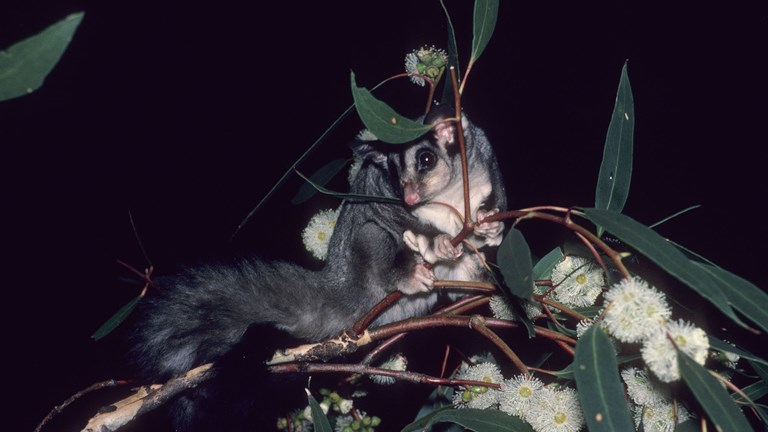
Squirrel Glider
Petaurus norfolcensis
Varanus varius
Tree Goannas enjoy secure conservation status. They are widespread and have adapted to many different environments.
Tree Goannas
Tree Goannas are found along the east coast of Australia. They live in a range of habitats including open forest and coastal plains.
Tree Goannas, also known as Lace Monitors, are powerful tree-climbers and fierce predators of small animals. They have strong, sturdy limbs and large claws to help them climb, and sharp teeth to catch and hold their prey.
Being reptiles, Tree Goannas are unable to moderate their own body temperature, instead relying on the sun and the ambient temperature. They are sluggish in winter, feeding little and rarely leaving their burrows. On warm days they bask in the sun to warm up. Their dark colour helps them absorb heat.
These lizards belong to a group called monitors. Monitors detect their prey with a special sense organ in the roof of their mouths called Jacobson’s organ. By flicking their long forked tongue out of their mouths, they transmit scent molecules to this organ. They forage for food in trees and on the ground.
Male Tree Goannas fight over females in behaviour known as ritual combat. They rise up on their hindlimbs and try to overpower one another, sometimes rolling over and over while wrestling. The losing male usually receives a nasty bite, while the winning male mates with the female.
Female Tree Goannas lay 4–14 leathery-shelled eggs in termite mounds. After 6–8 weeks, females may return to their eggs to excavate the hatchlings. They receive no further care from their mother.

Petaurus norfolcensis

Vespadelus vulturnus
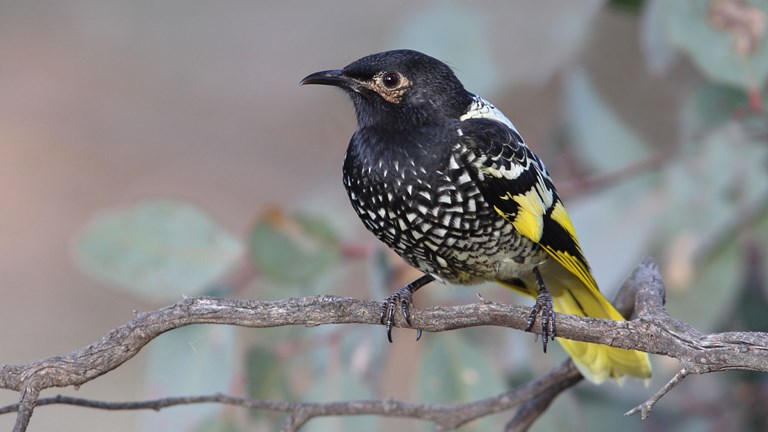
Anthochaera phrygia
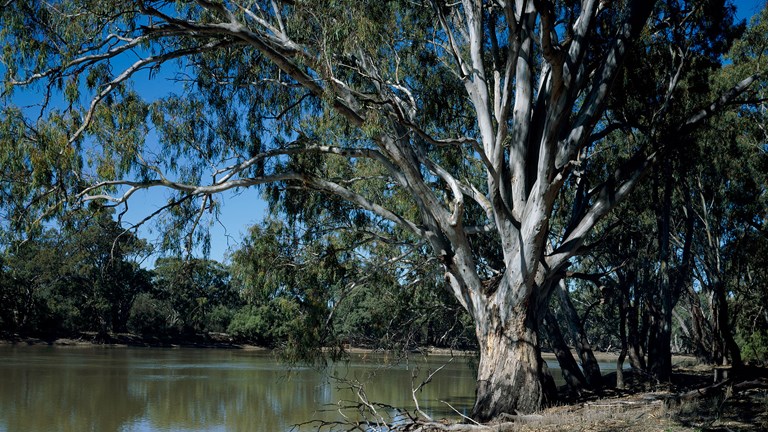
There are many types of dry forests in Victoria including stringybark, red gum, grassy woodlands and the remnants of the once great box–ironbark forests.
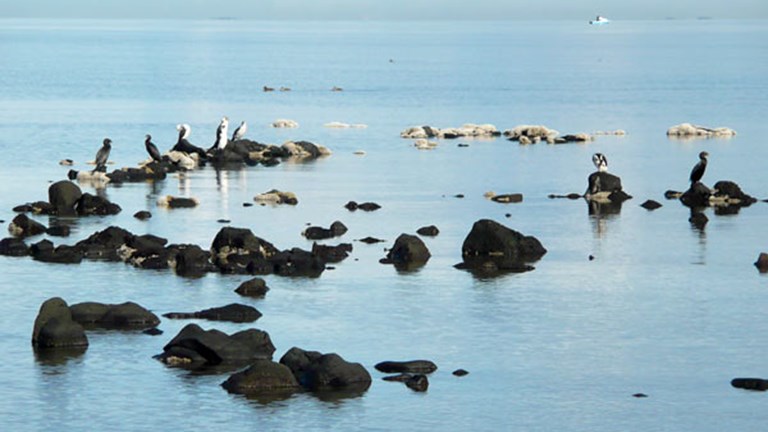
Victoria’s coastal wetlands are significant places for wildlife, with many listed in international conventions to protect the habitat of migratory birds.
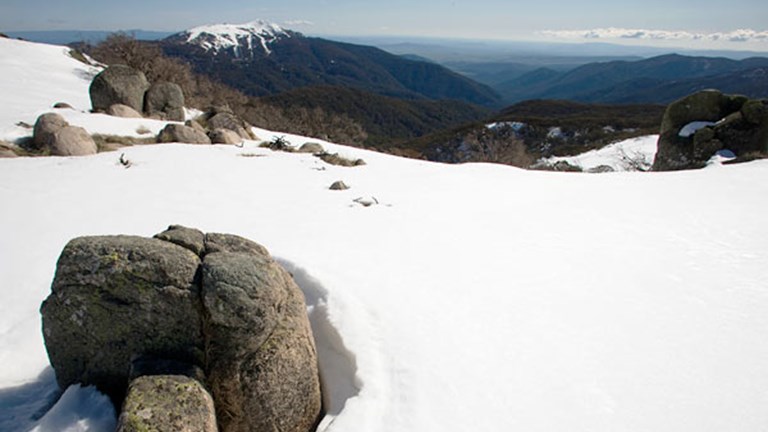
The Victorian Alps extend from the plateaus of Lake Mountain and Mt Baw Baw to peaks such as Mt Feathertop and the headwaters of the Murray River.
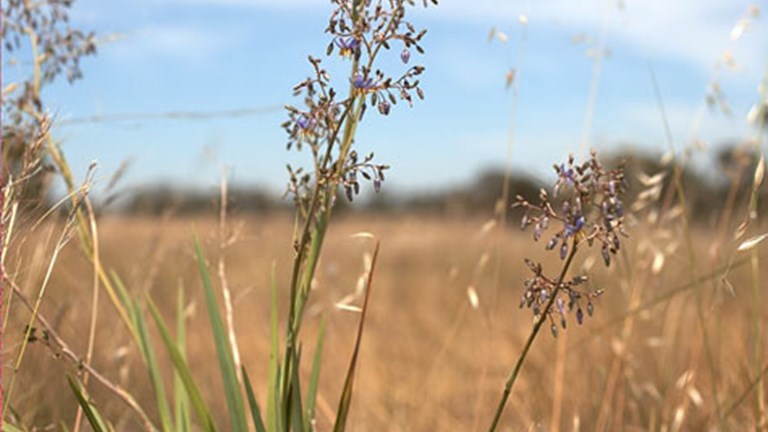
When the first Europeans arrived in Victoria there were grasslands on the vast, undulating western plains, on the northern plains and in Gippsland.
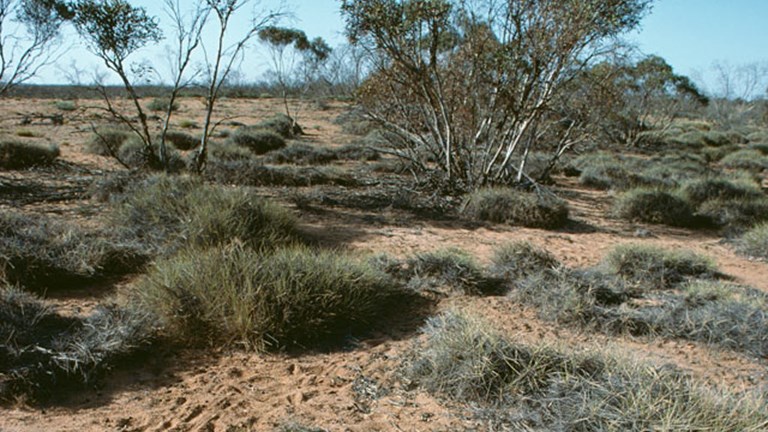
The Victorian Mallee in the north-western corner of the state has a mosaic of vegetation types adapted to low rainfall and sandy soils.
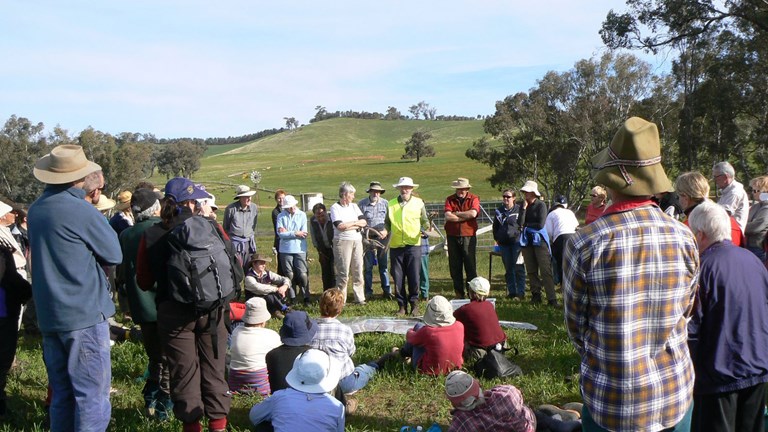
Find out about the issues affecting our special places and the plants and animals that live in them, and discover some ways you can help.
We are making improvements to our website and would love to hear from you about your experience. Our survey takes around 10 minutes and you can enter the draw to win a $100 gift voucher at our online store!
Museums Victoria acknowledges the Wurundjeri Woi Wurrung and Boon Wurrung Bunurong peoples of the eastern Kulin Nations where we work, and First Peoples across Victoria and Australia.
First Peoples are advised that this site may contain voices, images, and names of people now passed and content of cultural significance.